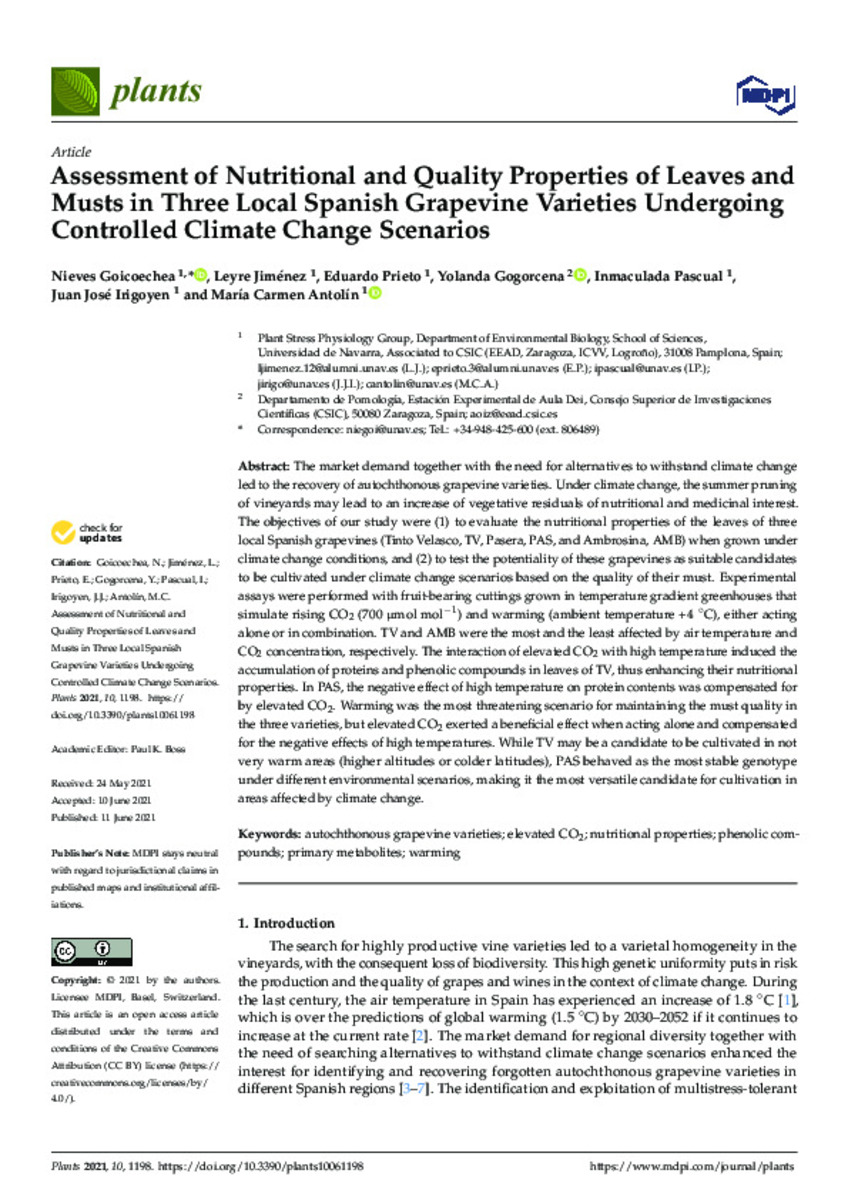Assessment of nutritional and quality properties of leaves and musts in three local spanish grapevine varieties undergoing controlled climate change scenarios
Palabras clave :
Autochthonous grapevine varieties
Elevated CO2
Nutritional properties
Phenolic compounds
Primary metabolites
Warming
Materias Investigacion::Ciencias de la vida::Biología
Fecha de publicación :
11-jun-2021
Proyecto:
EUROPEAN REGIONAL DEVELOPMENT FUND
Nota editorial :
CC BY 4.0
Nota:
This research was funded by FUNDACIÓN UNIVERSITARIA DE NAVARRA (2018).
Partial support was obtained from the SPANISH STATE RESEARCH AGENCY (AEI) cofinanced
with the EUROPEAN REGIONAL DEVELOPMENT FUND (FEDER) (project AGL2017-83358-R to
Y.G.; AEI/FEDER, UE), and the ARAGÓN GOVERNMENT (Group A09-20R).
Cita:
Goicoechea, N.; Jiménez, L.; Prieto, E.; Gogorcena, Y.; Pascual, I.; Irigoyen, J.J.; Antolín, M.C. Assessment of Nutritional and Quality Properties of Leaves and Musts in Three Local Spanish Grapevine Varieties Undergoing Controlled Climate Change Scenarios. Plants 2021, 10, 1198
Aparece en las colecciones:
Estadísticas e impacto
0 citas en

0 citas en

Los ítems de Dadun están protegidos por copyright, con todos los derechos reservados, a menos que se indique lo contrario.











